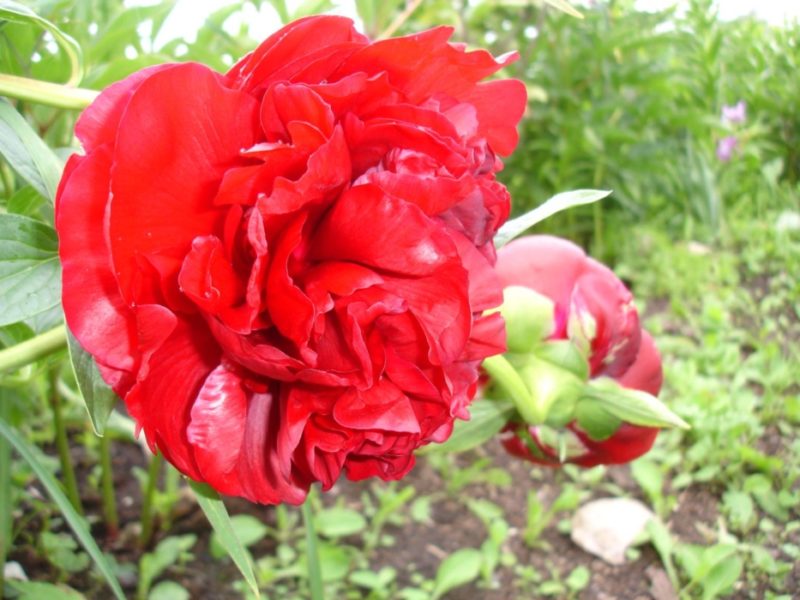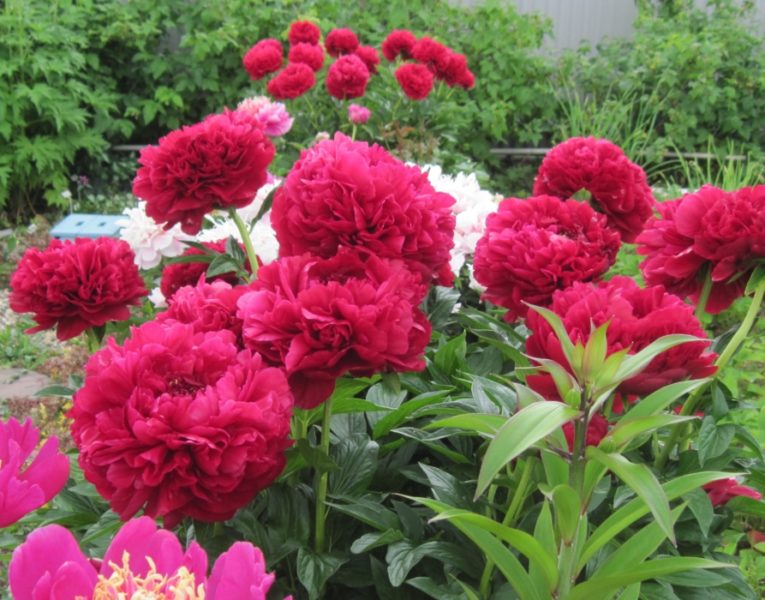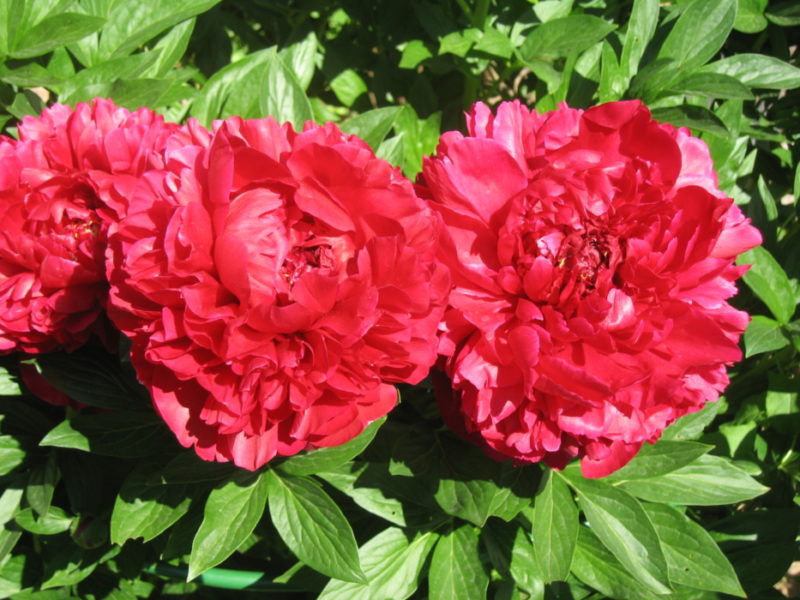Peony “Henry Boxtos” is a hybrid terry variety that was bred by Canadian breeders.
Material Content:
Description of the peony variety “Henry Boxtos”
The presented species is distinguished by rather thick stems that the wind does not break. Shoots very well hold heavy buds, but nevertheless it is better to tie bushes. Brief description of the variety: height up to 100 cm, has a light green openwork foliage with a yellowish tinge, the bud reaches 22 cm.
Flowering is truly luxurious. Bush flowers are directed upwards. Henry Bokstos simply does not give lateral inflorescences. The buds are pink in shape, the petals are dark red in color. At numerous exhibitions, the peony “Henry Bockstoce” takes prize-winning positions.
This early variety of Canadian selection is grown for cut - flowers stand in a vase for quite some time. Flowering begins in June.
The hybrid is well resistant to disease, frost-resistant, has a delicate aroma.
Outdoor landing
An open and sunny area should be reserved for landing. Loose soil with good drainage is preferred. You can not choose places in the lowlands with stagnation of water, since the Henry Boxtos reacts very poorly to excess moisture. The plant should not be planted next to structures, since snow drifts are very harmful to it.
They dig 90x90x90 holes for landing. It is advisable to prepare the pits in advance. They are half filled with peat and humus, adding a little ash. Having planted a bush in a well-fertilized soil in the first year it will be possible not to feed it.
It is preferable to carry out these works in the fall, so that the next season buds will already appear. When planting seedlings, you need to ensure that the buds are approximately at the level of the soil. Allowable deviation of 3-5 cm.Due to a deep planting or too tall, the plant may not bloom.
Saplings are lowered into a hole and covered with garden soil, lightly compacted and spilled abundantly. It is advisable to mulch young bushes with a layer of about 7-10 cm. Such measures can reduce the evaporation of moisture and facilitate care.
How to care for a plant
This interspecific hybrid can be called unpretentious culture, even despite its luxurious flowering. In the first year, all buds will have to be cut off so that the bushes do not spend power on them, but build up the root system.
You need to water the peony regularly, preventing the soil from drying out, but not moistening too much. After irrigation, the soil should be loosened and weeds removed.
In the spring, flower growers establish supports for grassy peonies. It is enough to drive a few pegs around the perimeter of the bush and tie them with a rope so that the heavy flowers do not bend to the ground.
Fertilizing “Henry Boxtos” is best done with mullein three times per season. The first feeding is at the very beginning of spring. Fertilizers are then applied during budding. After flowering, a third top dressing is added to help the plant regain strength faster. A shallow groove is dug around the bushes, into which the mullein is scattered, and the recesses are covered with earth. Under such conditions, along with watering, nutrients will get to the roots.
Before winter, the bushes are cut to hemp 5 cm high. In warm regions, you do not need to warm. In regions with a harsh climate, the culture is covered with spruce branches or covered with sawdust and peat.
All varietal qualities of the peony “Henry Boxtos” will fully manifest themselves only two to three years after planting.
Methods of propagation of interspecific hybrid
It is easiest to propagate such a terry variety by dividing the rhizome. Carry out the procedure in August. To do this, you need to dig a bush and remove it from the ground, shake off the roots and divide them with a shovel into dividers.
Each part should have roots and buds. The resulting twigs are immediately planted in the garden. With the onset of the first frosts, young plants are covered with sawdust or spruce branches to protect them from the cold.
Another variety can be planted with stem cuttings, but this method is very troublesome and technically difficult, because amateur gardeners do not use it.
In breeding, propagation of peonies by seeds is used. Prepared material is sown before winter. Only in a year will shoots appear. Sprouts are planted for growing. Such plants bloom only in the sixth year.
Pest and Disease Control
The variety is quite resistant to various ailments, but it can still be affected by rust and gray rot. Symptoms of the disease are the appearance of spots on the foliage. At the first sign of damage, the bushes are sprayed with fungicides.
The circular mosaic is characterized by the appearance of patterns on the foliage. Plants die from this disease. In case of defeat, the bush will have to be destroyed.
And also peonies can attack cinnamon and aphids. Against parasitic insects apply treatment "Karbofos" and green soap. Caterpillars from the bushes are harvested manually.
Peonies of the Henry Boxtos variety are magnificent flowers for the garden, which will become the main colorful decoration of the spring flowerbed. Despite its amazing appearance, the culture is not picky, and forgives many mistakes to the grower.

















